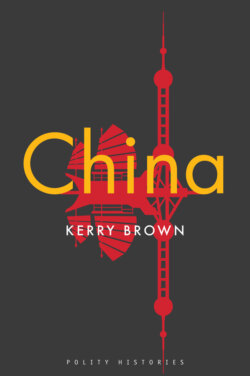Читать книгу China - Kerry Brown - Страница 22
China and the World
ОглавлениеNor were the enemies solely within. New China after its establishment was an isolated place. The Nationalists, in fleeing to the island of Taiwan, also took with them most diplomatic alliances, including that with the United States, and a seat on the newly established United Nations. The Republic of China, with less than 5 per cent of the land mass of the PRC, and only a fraction of the people (in 1949, its population came to 7 million), was seen as the ‘real China’. Mao’s country was simply regarded as an interloper. For the USSR and its allies, however, the similarity in political model meant that they did have to confer recognition. The PRC was formally established on 1 October 1949. The USSR recognized it the next day. The Democratic People’s Republic of Korea (i.e. North Korea) followed five days later. But by the end of 1949, there were still only twelve states recognizing Beijing. By 1960, the PRC only increased its quota of countries with formal links by twenty-two.
Alliance with the USSR was perhaps the most significant move that the PRC government made in international affairs at its foundation. ‘The [CPC’s] decision to ally with the Soviet Union was a major factor spreading Cold War conflict in East Asia,’ John Garver has written in a comprehensive diplomatic history of this period. ‘The PRC’s decision to ally with the Soviet Union had a profound impact on China’s foreign relations and on the entire world situation.’21 Dependence on Moscow for technical and financial assistance was one element of this. So was Mao’s quest to maintain the uniqueness and autonomy of the new country’s position. In many ways, the Five Principles of Peaceful Coexistence that Foreign Minister Zhou Enlai (1898–1976) announced at the conference in Bandung, Indonesia, in 1955, with their premium placed on non-interference in the affairs of others and respect for their sovereignty, were aimed at protecting the PRC as much from Russian influence as from that of the imperialist capitalist West.
If Chinese Communism had grown from the soil of the Russian Revolution, it certainly did not feel beholden to it. While Stalin was alive, Mao was respectful. But after his death in 1953 the first sign of cracks started to appear. The most costly issue for Beijing as it created its new network of international relations was the decision by fellow socialist nation North Korea in 1950 to attack the South, from which it had been divided as a result of the outcome of the Second World War. Kim Il Sung had spent many years in north-east China. Chinese Communism, with its hybridity, had clearly had a profound impact on him. But his own version proved as bespoke as that practised in Beijing, with a fierce focus on Korean nationalism. The cost of Kim’s attack on South Korea under US protection was to be high for Mao. It not only included the loss of his own son along with up to a million other troops, but also provided a deeply unwanted distraction from the unfinished business of Taiwan. Deployment of over 3 million soldiers across the Yalu river into North Korea meant that at a crucial time when planning had already proceeded to see the People’s Liberation Army (PLA) make moves across the Taiwan Strait to take on the Nationalists on the island, everything was halted. The PRC had a small window of opportunity to effect its unification plans. North Korea effectively scuppered these. By the time of the announcement of the ceasefire in 1953, America had already solidified its alliance with Taiwan. The situation, in Beijing’s eyes at least, remains unresolved to this day.
